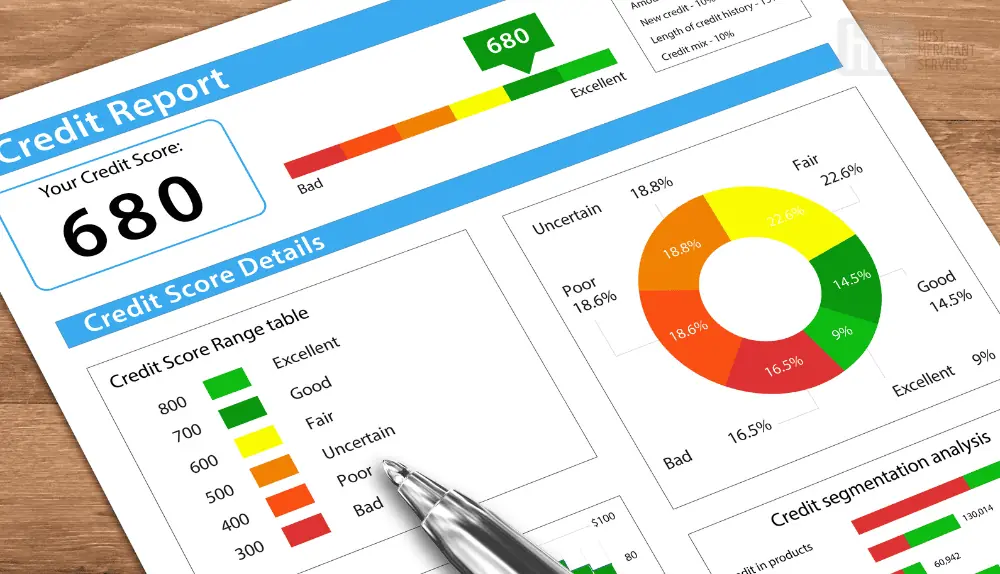In the dynamic landscape of business financing, two popular options often come into play: the reliable line of credit and the steadfast term loan. As an entrepreneur seeking financial fuel to power your business, you find yourself at a crossroads, pondering which path to take. Should you embrace the flexibility and revolving nature of a line of credit or opt for the structured stability of a term loan?
The decision you make could shape the course of your business’s growth and success. In this article, we unravel the intricacies of these two financing options, exploring their unique features, benefits, and potential drawbacks. By the end, you’ll be armed with the knowledge needed to navigate the winding road of business finance and choose the route that best suits your entrepreneurial aspirations. So, buckle up, and let’s embark on this captivating journey of the line of credit vs term loan and what is better for your business.
What is a Business Term Loan?

A business term loan is a popular form of financing that provides a lump sum of money to a business for a specific period, typically ranging from one to ten years. This type of loan is characterized by its structured repayment plan, where the borrower agrees to make regular fixed payments, including both principal and interest, over the loan term.
Term loans are often sought by businesses for various purposes, such as purchasing equipment, expanding operations, funding working capital, or investing in new ventures. The loan amount is determined based on factors such as the borrower’s creditworthiness, business history, collateral, and the purpose of the loan.
One key advantage of a term loan is its predictability. The borrower knows the exact amount they need to repay each month, allowing for better budgeting and financial planning. Additionally, term loans generally offer lower interest rates compared to other forms of financing, such as credit cards or lines of credit.
However, term loans may require collateral, such as business assets or personal guarantees, to secure the loan. Furthermore, early repayment may incur prepayment penalties. Despite these considerations, business term loans remain a valuable tool for entrepreneurs seeking a structured and reliable funding source to fuel their growth and achieve their business goals.
When to Use a Term Loan?
A term loan can be an appropriate financing option for specific business situations. Here are a few scenarios where opting for a term loan might be advantageous:

Capital Expenditures
If your business needs to make significant investments in assets like equipment, machinery, or vehicles, a term loan can provide the necessary funds. This allows you to spread out the cost over time while acquiring the essential resources to expand or enhance your operations.
Expansion Projects
When planning to expand your business, whether by opening new locations, renovating existing facilities, or launching a new product line, a term loan can offer the financial boost required. The fixed repayment schedule ensures you can manage the costs while focusing on growth opportunities.
Business Acquisitions
If you’re considering acquiring another business or buying out a partner, a term loan can provide the capital required for the transaction. This type of loan allows you to negotiate favorable terms and structure payments that align with the anticipated cash flows from the acquired business.
Long-Term Investments
For strategic initiatives that have long-term payoffs, such as research and development, intellectual property development, or market expansion, a term loan can provide the necessary funding. It allows you to invest in these projects while repaying the loan over an extended period.
Remember, it’s crucial to assess your business’s financial health and ability to make regular loan payments before committing to a term loan. Additionally, comparing different loan offers, understanding the terms and conditions, and seeking professional advice can help ensure that a term loan aligns with your business objectives and financial capabilities.
Requirements of a Term Loan
When applying for a business term loan, lenders typically have specific requirements that borrowers must meet. Based on the provided information, here are some common criteria to consider:

Minimum Credit Score
Lenders may require a minimum credit score of 680 or higher for loan eligibility. A good credit score demonstrates responsible credit management and increases the chances of loan approval.
Monthly Revenue
Lenders often prefer businesses with a minimum monthly revenue of $8,000 or above. This criterion ensures the business has a steady income stream to support loan repayment.
Time in Business
Lenders typically require a minimum operating history of at least two years. This timeframe allows lenders to assess the business’s stability, performance, and ability to generate consistent revenue.
Financial Statements
Arrange financial statements, including income statements, balance sheets, as well as cash flow statements, to provide a comprehensive overview of your business’s financial health. These statements should demonstrate sufficient revenue and cash flow to support loan repayment.
Business Plan
Develop a detailed business plan that outlines your objectives, strategies, and how the loan funds will be utilized. A well-structured business plan showcases your understanding of your industry, market, and financial projections, instilling confidence in the lender regarding your ability to manage the loan effectively.
Collateral
Depending on the loan amount and lender’s requirements, collateral may be necessary to secure the loan. Collateral can be in the form of business assets, such as equipment, inventory, or property, providing the lender with additional security in case of default.
Documentation
Be prepared to provide documentation such as tax returns, bank statements, legal agreements, and any other relevant financial or legal records. These documents verify the authenticity of your business and support the lender’s assessment of your financial stability.
It’s important to note that meeting these requirements does not guarantee loan approval, as lenders consider various factors when evaluating loan applications. Additionally, different lenders may have specific criteria, so it’s advisable to research and compare options to find the lender whose requirements align best with your business’s qualifications.
What is a Business Line of Credit?

A business line of credit is a flexible form of financing that provides a predetermined maximum borrowing limit to a business. It functions similarly to a credit card, allowing the borrower to withdraw funds as needed, up to the approved limit. Unlike a term loan, a line of credit offers revolving credit, meaning that as the borrower repays the borrowed amount, the available credit replenishes, providing ongoing access to funds.
Businesses often utilize a line of credit to manage short-term cash flow fluctuations, cover unexpected expenses, seize opportunities, or bridge gaps in revenue cycles. It offers the advantage of providing quick access to funds without the need for frequent loan applications or approval processes.
Interest is typically charged only on the amount borrowed, and the repayment terms vary based on the lender’s agreement with the borrower. Additionally, lines of credit may require collateral or personal guarantees to secure the credit line.
A business line of credit empowers entrepreneurs with the flexibility to address their working capital needs promptly and efficiently, making it a valuable tool for managing the financial ebbs and flows of a business.
When to Use a Line of Credit
A line of credit can be a useful financing option for various business scenarios. Here are a few instances where utilizing a line of credit might be advantageous:

Managing Cash Flow
A line of credit can help businesses navigate cash flow fluctuations and address short-term financial needs. It provides a safety net to cover expenses during periods of low revenue or when unexpected costs arise, allowing for smooth operations without disrupting the business’s cash flow.
Seasonal Businesses
Businesses that experience seasonal fluctuations in sales and revenue can benefit from a line of credit. It provides the flexibility to access funds during slow seasons to cover operational expenses or inventory costs, ensuring the business can continue operating until the peak season arrives.
Emergency Situations
Unforeseen emergencies, such as equipment breakdowns, repairs, or sudden opportunities, may require immediate access to funds. A line of credit can serve as a lifeline, offering quick access to capital without the need for a lengthy loan approval process, enabling businesses to seize opportunities or address urgent matters promptly.
Business Expansion
When pursuing growth opportunities, such as launching a new product line, expanding into new markets, or opening additional locations, a line of credit can provide the necessary funding. It offers the flexibility to access funds as needed, supporting the business’s expansion plans without committing to a long-term loan.
Working Capital Needs
Businesses may require additional working capital to fund day-to-day operations, pay suppliers, or manage payroll. A line of credit ensures that businesses have access to funds whenever needed, helping to maintain smooth business operations and meet financial obligations.
It’s important to note that while a line of credit offers flexibility, it’s essential to use it responsibly and manage repayments effectively. Regular monitoring of credit utilization and making timely payments will help maintain a good credit standing and ensure that the line of credit remains a reliable resource for the business.
Requirements of a Line of Credit
When applying for a line of credit, lenders typically have specific requirements that borrowers must meet. Based on the provided information, here are some common criteria to consider:
Minimum Credit Score
Lenders may require a minimum credit score of 600 or higher for a line of credit eligibility. While this requirement is generally lower than for term loans, a higher credit score can increase your chances of securing a line of credit and potentially qualify you for better terms.
Annual Revenue
Lenders often prefer businesses with a minimum annual revenue of $50,000 or above. This criterion ensures that the business has a sufficient income stream to support borrowing and repayment under the line of credit.
Time in Business
Lenders typically require a minimum operating history of at least six months. While the requirement is shorter than for term loans, it demonstrates that the business has established itself and can provide the lender with a track record of financial activity.
Financial Statements
Preparing financial statements that includes income statements, cash flow, balance sheets, etc. to provide an overview of your business’s financial health. These statements should demonstrate sufficient revenue and cash flow to support borrowing and repayment under the line of credit.
Collateral or Guarantees
Depending on the lender’s requirements and the creditworthiness of the business, collateral or personal guarantees may be required to secure the line of credit. Collateral can include business assets, such as equipment, inventory, or property, providing the lender with additional security.
Documentation
Be prepared to provide documentation such as tax returns, bank statements, legal agreements, and any other relevant financial or legal records. These documents verify the authenticity of your business, support the lender’s assessment of your financial stability, and determine the credit limit of the line of credit.
Differences Between Line of Credit vs Term Loan
A line of credit and a term loan are two distinct forms of financing that businesses can utilize based on their specific needs. Here are the key differences between a line of credit and a term loan:
Flexibility
A line of credit offers more flexibility compared to a term loan. With a line of credit, businesses have access to a predetermined credit limit and can borrow and repay funds as needed, similar to a revolving credit card. On the other hand, a term loan provides a lump sum amount upfront, which is repaid over a fixed term with regular installments.
Repayment Structure
A line of credit typically has a revolving repayment structure. As the borrower repays the borrowed amount, the credit limit replenishes, allowing ongoing access to funds. In contrast, a term loan follows a fixed repayment schedule, with regular payments over the agreed loan term until the principal and interest are fully repaid.
Interest and Fees
Both lines of credit and term loans involve interest charges, but the structure differs. In a line of credit, interest is typically charged only on the amount borrowed and for the duration it is borrowed. In contrast, a term loan charges interest on the full loan amount from the beginning, regardless of whether the borrower utilizes the entire sum.
Purpose and Usage
A line of credit is suitable for managing short-term financing needs, addressing cash flow fluctuations, or covering unexpected expenses. It offers a flexible option for ongoing working capital requirements. In contrast, a term loan is often used for specific purposes such as business expansion, equipment purchases, or long-term investments. It provides a lump sum upfront, which is intended for a defined purpose.
Collateral and Guarantees
Depending on the lender and the amount borrowed, both lines of credit and term loans may require collateral or personal guarantees to secure the financing. Collateral can be in the form of business assets, such as equipment, inventory, or property.
Approval Process
The approval process for lines of credit and term loans can differ. Lines of credit are generally quicker to obtain, with a simplified application process. Term loans may involve more extensive documentation and evaluation, including financial statements, business plans, and collateral assessments.
It’s essential to evaluate your business’s specific needs and financial goals when choosing between a line of credit and a term loan. Each option has its advantages and considerations, and selecting the right financing solution can greatly impact your business’s financial management and growth.
How to Choose the Right Financing Option for Your Business
Choosing the right financing option for your business requires careful consideration of various factors. Here are some steps to help you make an informed decision:
Assess Your Business Needs
Start by evaluating your specific financial needs. Consider why you need financing, whether it’s for short-term cash flow management, equipment purchases, business expansion, or other purposes. Understanding your needs will guide you in selecting the most suitable financing option.
Evaluate Repayment Terms
Examine the repayment terms of different financing options. Determine whether you prefer the flexibility of a line of credit or the structured payments of a term loan. Consider the interest rates, repayment period, and whether the repayment schedule aligns with your business’s cash flow.
Consider Amount and Purpose
Determine the amount of funding you require and how you plan to use it. Some financing options may be better suited for smaller amounts, while others are designed for larger investments. Match the purpose of the financing with the options available to find the best fit.
Review Eligibility Criteria
Understand the eligibility criteria set by lenders for each financing option. Consider factors such as credit score, business revenue, time in business, collateral requirements, and documentation. Ensure that you meet the criteria or are willing to work towards meeting them.
Compare Interest Rates and Fees
Compare the interest rates, fees, and associated costs of different financing options. Consider both the annual percentage rate (APR) and any additional fees or charges. Calculate the total cost of financing to make an accurate comparison.
Explore Lender Options
Research different lenders, including traditional banks, credit unions, online lenders, and alternative financing providers. Compare their offerings, reputation, customer reviews, and customer service. Assess their willingness to work with businesses similar to yours.
Seek Professional Advice
Consult with financial advisors, accountants, or business consultants for expert advice on selecting the right financing option. They can help you understand the pros and cons of different choices and guide you based on your business’s specific circumstances.
Plan for the Future
Consider your long-term goals and how the chosen financing option aligns with your business’s growth plans. Evaluate whether the financing option allows for future flexibility or if it may limit your ability to secure additional financing in the future.
Final Words
In conclusion, choosing the right financing option for your business requires careful consideration and evaluation of various factors. Throughout this article, we have discussed the differences between a line of credit and a term loan, as well as the requirements for each. When making a decision, it is important to assess your business needs, evaluate repayment terms, consider the amount and purpose of the financing, review eligibility criteria, compare interest rates and fees, explore different lender options, seek professional advice, and plan for the future.
By taking these steps and considering the specific circumstances of your business, you can make an informed decision that aligns with your financial goals and supports your business’s growth. Remember, financing is a powerful tool, and selecting the right option can provide the necessary capital to propel your business forward and ensure its long-term success.
Frequently Asked Questions (FAQs)
What is the difference between a line of credit and a term loan?
A line of credit provides flexibility with ongoing access to a predetermined credit limit, while a term loan offers a lump sum upfront that is repaid over a fixed term with regular installments.
What factors determine eligibility for a business term loan?
Factors such as credit score, monthly revenue, time in business, financial statements, business plan, collateral, and documentation play a role in determining eligibility for a term loan.
What are the advantages of a line of credit?
The main advantages of a line of credit are flexibility in borrowing and repayment, access to funds for short-term needs, the ability to manage cash flow fluctuations, and potentially lower interest costs compared to term loans.
What are the typical uses of a term loan?
Term loans are often used for specific purposes such as business expansion, equipment purchases, real estate investments, working capital needs, or refinancing existing debt.
Can I get a business loan with bad credit?
While it may be more challenging, some lenders offer business loans to borrowers with less-than-perfect credit. However, the terms and interest rates may be less favorable, and collateral or personal guarantees may be required.
How long does it take to get approved for a business loan?
The approval process for a business loan can vary depending on the lender and the complexity of the application. It may take anywhere from a few days to several weeks to get approved.

